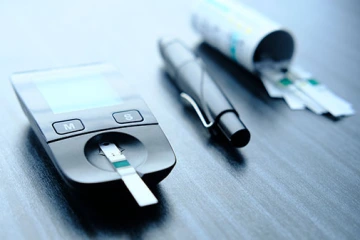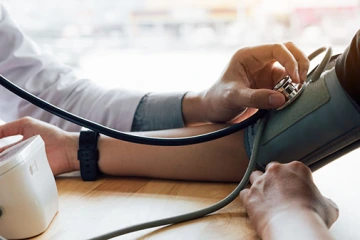Prediabetes: The 84 Million-Person Health Risk
You are likely familiar with type 2 diabetes, the most common form, but what do you know about prediabetes?


According to the Centers for Disease Control and Prevention (CDC), the number of adults diagnosed with diabetes has tripled in the last 20 years.
Prediabetes means a person's blood glucose (sugar) level is higher than normal, but not high enough to be diagnosed as diabetes. If you have prediabetes, you are at increased risk for developing serious health problems, such as type 2 diabetes, stroke and heart disease. The sooner people find out they have prediabetes and act, the better their chances to prevent type 2 diabetes. Without weight loss and moderate physical activity, many people with prediabetes will develop type 2 diabetes within five years.

When a person has type 2 diabetes, their body does not use insulin properly. This is called insulin resistance.

If you had diabetes while pregnant (gestational diabetes) or gave birth to a baby that weighed 9 pounds or more, you are at risk for developing type 2 diabetes.
Knowing and managing your risk of prediabetes and type 2 diabetes is essential to prevention. Individuals at risk are:
- Overweight (BMI > 25)
- Age 45 or older
- Have a family member with type 2 diabetes
- Physically active less than 3 times a week
- Have high blood pressure
- Have high cholesterol
- Had diabetes while pregnant (gestational diabetes) or gave birth to a baby that weighed 9 pounds or more
Some populations are at higher risk of developing type 2 diabetes so be sure to see a physician to know your risk, especially if you are descended from:
- African American
- Hispanic/Latino American
- American Indian/Alaskan Native
- Some Asian American

Individuals with diabetes are twice as likely to have heart disease or a stroke, and at an earlier age than people without diabetes.
What can you do?
Modest weight loss (7 percent) through improved diet and increased physical activity can prevent or delay prediabetes from progressing to diabetes. For many people losing 10 to 15 pounds can reduce their chance of developing type 2 diabetes by almost 60 percent!
The National Diabetes Prevention Program (National DPP) will help you lower your risk by improving your food choices, increasing physical activity, managing stress, staying motivated and solving problems that can get in the way of healthy changes. Find a program near you or online: https://nccd.cdc.gov/DDT_DPRP/Programs.aspx

Modest weight loss (7 percent) through improved diet and increased physical activity can prevent or delay prediabetes from progressing to diabetes.
The first step in preventing or managing diabetes is to know your risk and to talk to a health-care professional. Knowing your numbers is critical for goal setting and for understanding how your body responds to lifestyle changes.
Learn more at the UA Sarver Heart Center’s Diabetes/Heart Disease Connection Lunch and Learn Program, Saturday, Sept. 28, 11 a.m. – 1:30 p.m., in the UA Health Sciences Innovation Building. Registration information.
About the Author
Kelly Palmer, MHS, CCRP, is the administrator for the University of Arizona Health Sciences Center for Border Health Disparities. Working under the direction of David Marrero, PhD, she is seeking to reduce the burden of health disparities, particularly diabetes, in the U.S.-Mexico border region. She also is a third-year doctoral student in the UArizona Mel and Enid Zuckerman College of Public Health’s Health Behavior Health Promotion Sciences Program, training in health disparities/health equity research with a focus on community engagement and culture to prevent/manage chronic disease among minority/vulnerable populations. She also is a member of the UArizona Sarver Heart Center Minority Health Outreach Program; a board member of the Coalition for African American Health and Wellness; a member of the Healthy Pima Together to End Diabetes Workgroup; and a member of the Arizona Diabetes Coalition.

